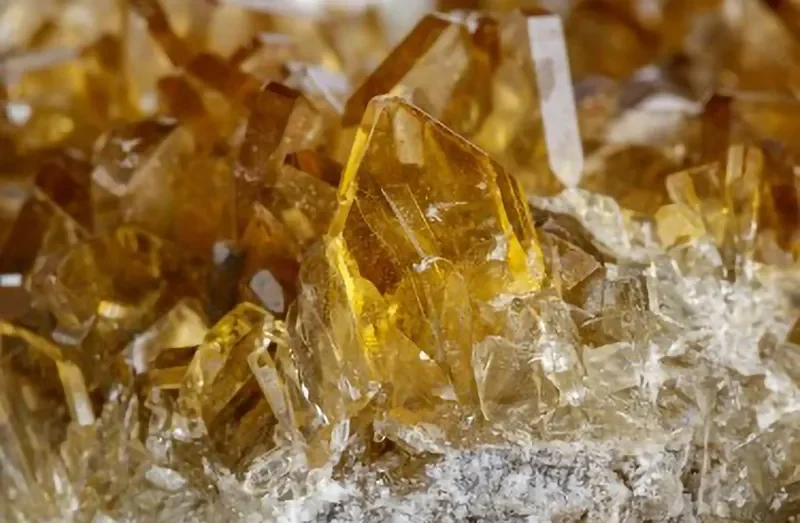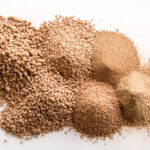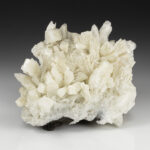Barite – A Comprehensive Guide to Properties, Uses, and Industrial Applications
Barite Comprehensive Guide which is Barite, also known as baryte or Barium sulfate a mineral composed primarily of barium sulfate (BaSO4). It is the main source of barium, which has various industrial applications. Barite is commonly found in sedimentary rocks and is often associated with other minerals such as calcite, dolomite, and quartz. In this article, we will explore the properties, uses, extraction methods, and environmental impact of barite.
What is Barite (BaSO₄)?
Barite, also known as Baryte or Barium sulfate, is a naturally occurring mineral composed of barium sulfate (BaSO₄). It is highly valued for its high specific gravity, chemical inertness, and brightness—making it a critical component in several industrial applications.
Properties of Barite
| Property | Value / Description |
|---|---|
| Chemical Formula | BaSO₄ |
| Specific Gravity | 4.2–4.5 |
| Hardness (Mohs Scale) | 3–3.5 |
| Color | White, Grey, Brown, Blue, Yellow |
| Crystal System | Orthorhombic |
| Solubility | Insoluble in water and acids |
| Toxicity | Non-toxic and safe to handle |
📌 The high specific gravity of Barite makes it especially useful in oil and gas well drilling.
Physical properties
Barite has a relatively high density, with an average specific gravity of 4.5 g/cm3. It is a non-metallic mineral with a white, yellow, gray, or light blue color. The hardness of barite ranges from 2.5 to 3.5 on the Mohs scale, indicating its relatively low hardness compared to other minerals.
Chemical properties
Barite is chemically inert and does not react with most acids or bases. It is insoluble in water and has a low solubility in other common solvents. The chemical composition of barite consists of barium (Ba) and sulfate (SO4) ions.
Industrial Uses of Barite
🛢️ 1. Oil and Gas Drilling
Barite is primarily used as a weighting agent in drilling muds to control formation pressure and prevent blowouts.
-
Keeps drill bit cool and lubricated
-
Stabilizes borehole walls
-
Prevents gas or fluid influx from formations
One of the primary uses of mineral Barium sulfate is in the oil and gas industry, where it is used as a weighting agent in drilling fluids. Barite’s high density helps to control the pressure exerted by the drilling fluid, preventing blowouts and stabilizing the borehole. It also acts as a lubricant, reducing friction between the drill bit and the rock formation.
🎨 2. Paints and Coatings
-
Acts as a filler and extender
-
Provides a smooth finish and improves brightness
-
Enhances chemical resistance
Barium sulfate is used as a filler in paints and coatings due to its high refractive index, which improves the opacity and brightness of the finished product. It also provides resistance to chemical and weathering effects, making it suitable for outdoor applications.
🧴 3. Plastics and Rubber
-
Used as a white pigment and weight filler
-
Improves rigidity and sound insulation properties
🏗️ 4. Construction Materials
-
Used in cement and concrete mixtures
-
Provides radiation shielding in hospitals and nuclear facilities
In the construction industry, barite is used as an aggregate in concrete and mortar to provide weight and stability. It is also used as a radiation shielding material in nuclear power plants and medical facilities.
💊 5. Medical and Radiological Applications
-
Barite is used in barium meals and X-ray contrast agents
-
Non-toxic and opaque to X-rays
Barium sulfate, a derivative of Barium sulfate, is used in medical imaging procedures such as X-rays and CT scans. It is administered orally or rectally as a contrast agent to enhance the visibility of the gastrointestinal tract, allowing for better diagnosis of conditions such as tumors, ulcers, and blockages.
🌍 6.Other applications
Barite has various other applications, including in the production of rubber and plastics as a filler and in the manufacturing of ceramics, glass, and paper. It is also used in the production of barium chemicals, fireworks, and as a flux in metal smelting processes.
Global Barite Production and Supply
Top producers include:
-
China
-
India
-
Morocco
-
United States
-
Iran
Barite is exported in both lump and powder form depending on industrial need.
Benefits of Barite in Industrial Processes
-
✅ High-density and insolubility in water
-
✅ Chemically inert and safe to use
-
✅ Cost-effective as a filler or extender
-
✅ Excellent dispersion in oil-based systems
-
✅ Ideal for use in environmentally sensitive applications
Extraction and Production of Barite
Mining methods
Barite is typically extracted through open-pit or underground mining methods, depending on the depth and accessibility of the deposit. In open-pit mining, the ore is extracted by removing the overlying soil and rock layers. Underground mining involves tunneling into the earth to reach the Barium sulfate deposit.
Processing and beneficiation
Once the barite ore is extracted, it undergoes processing and beneficiation to remove impurities and improve its quality. The ore is crushed and ground into a fine powder, which is then subjected to various techniques such as gravity separation, flotation, and magnetic separation to separate the barite from other minerals.
Production and distribution
The largest producers of barite include China, India, Morocco, the United States, and Mexico. These countries have abundant barite deposits and well-established mining and processing operations. Barium sulfate is typically transported in bulk via ships, trucks, or rail to its destination, where it is further processed or used directly.
Environmental Impact of Barite Mining
Habitat disruption
Barite mining activities can lead to habitat disruption and loss, especially in areas with rich biodiversity. The clearing of vegetation and the excavation of land for mining operations can result in the destruction of habitats for plants and animals.
Water pollution
During the extraction and processing of Barium sulfate, there is a potential for water pollution. The chemicals used in the beneficiation process, such as frothers and collectors, can contaminate nearby water sources if not properly managed. Additionally, the discharge of wastewater from mining operations can introduce pollutants into rivers and streams.
Air pollution
Barite mining and processing operations can also contribute to air pollution. Dust and particulate matter generated during crushing, grinding, and transportation of barite can be released into the air, potentially causing respiratory issues and environmental degradation.
Mitigation measures
To mitigate the environmental impact of barite mining, various measures can be implemented. These include proper mine planning and reclamation to restore the land after mining activities, the use of environmentally friendly processing techniques, and the implementation of water and air pollution control measures.
Frequently Asked Questions (Barite Comprehensive Guide)
❓ What is Barite used for?
Barite is used in oil and gas drilling, paints, plastics, medical imaging, and radiation shielding due to its high density and inertness.
❓ Is Barium sulfate safe to handle?
Yes. Barite is non-toxic and safe to handle, making it suitable for medical and industrial use.
❓ Can Barite be used in food or pharmaceuticals?
No. While Barium sulfate is used in radiological contrast agents, it is not suitable for consumption or inclusion in general pharmaceuticals.
❓ Is there a difference between Barite and Baryte?
No difference. “Barite” is the American spelling; “Baryte” is used in British English.
Conclusion-Barite Comprehensive Guide
Barite is a versatile mineral with a wide range of industrial applications. Its high density and chemical properties make it valuable in the oil and gas industry, medical imaging, paints and coatings, and construction.
However, it is important to consider the environmental impact of barite mining and processing. Measures should be taken to mitigate habitat disruption, water and air pollution, and ensure responsible mining practices. By balancing the economic benefits of Barium sulfate with sustainable mining practices, we can continue to utilize this valuable mineral while minimizing its environmental impact.
Explore this in-depth guide to Barite (Barium Sulfate) covering its properties, benefits, and applications in drilling, paints, plastics, and other industries.
-
industrial applications of Barium sulfate mineral
-
what is Barium sulfate used for in drilling fluids
-
high density barium sulfate for oil drilling
-
barite powder uses in paint and plastics
-
Barium sulfate properties and industrial benefits
📞Looking for Reliable Barite Supply?
We in PARS Universal Bitumen, provide high-purity Barite in lump and powder form, ideal for drilling, construction, and industrial use. Competitive pricing, COA included, and global delivery.
👉 Request a quote now or speak with our technical team.
📩 Email: [email protected]
📞 Call:+971 4 878 2031
🌐 https://pub-ltd.com/contact-us/
Get in touch today to speak with our experts, request a technical data sheet, or receive a custom quote for Barite (Barium Sulfate) tailored to your project. PUB-Ltd as your Barite Supplier & Provider. For more information or to place an order, please contact PUB-Ltd sales team 📩 Contact Us Now.




